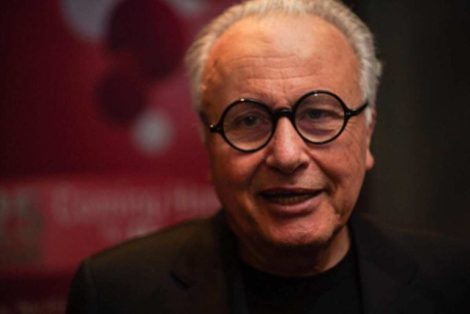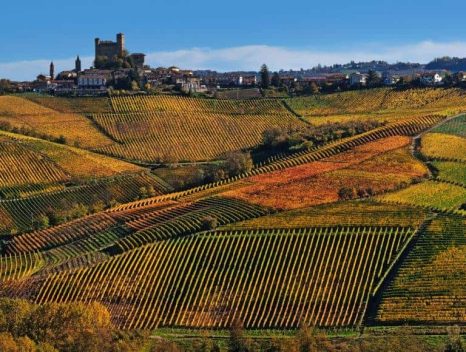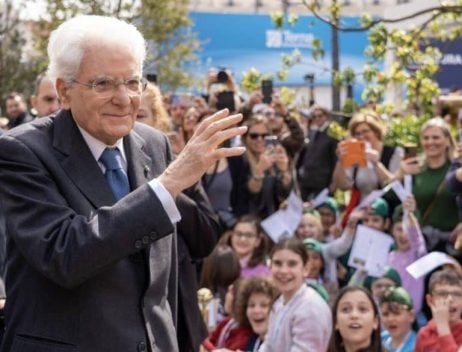More than just a shop, Drogheria Innocenzi is a long-standing icon of the Rione, where, among its oldest residents, people still speak the now-vanished “old Roman” dialect of the past. I enter the shop from Via Natale del Grande, though there’s a second entrance on Piazza San Cosimato at No. 66. Inside Trastevere’s most famous grocer, I find myself in a place frozen in time—a gourmet emporium within a vintage locale, its size hard to discern beneath the abundant goods filling every corner. Exploring it slowly is pure joy, losing myself among shelves, mountains of candies, and sacks overflowing with legumes and dried fruits. And then there’s the unmistakable aroma of coffee and sugar. The shop has kept much of its original furnishings and remains a beloved spot for both locals and visitors to find rare delicacies. The backbone of this business is the family, which has owned it for 77 years. In this paradise of extraordinary products, where craftsmanship holds great value, even the price tags are hand-drawn.
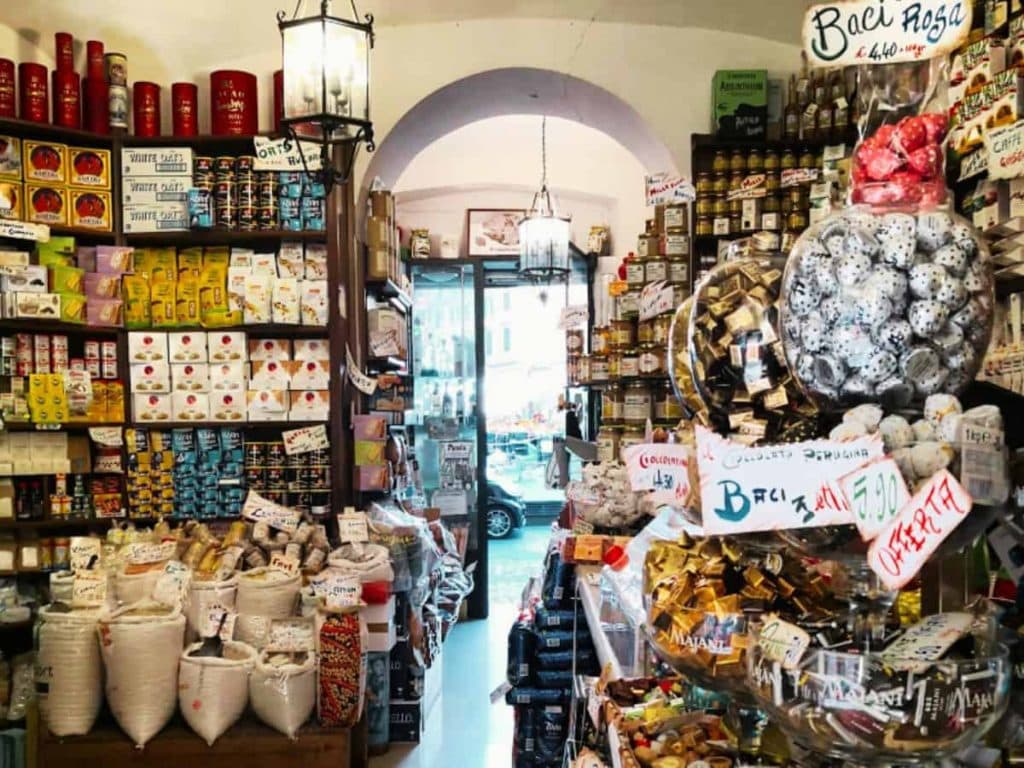
The historic Trastevere grocer
In ancient Rome, the Latin name of Rione XIII was simply trans Tiberim, or “beyond the Tiber,” as the city originated and developed mainly on the opposite bank of the river. The area was largely countryside, populated from early times by people from all the regions conquered by the Roman Republic and Empire. Over the centuries, this has been Trastevere’s hallmark: pilgrims, travelers, and artists continued to gather and stay, giving the Rione its unique village feel nestled within the Eternal City.
This is why Drogheria Innocenzi began nearly eighty years ago. During World War II, Raffaele Innocenzi and his wife Imola ran an authorized grocery stall across the square, behind the market counters. The couple had two sons, Giancarlo and Giovanni (known as Sandro). In 1947, Raffaele Sr. took over an old grocery shop dating from 1884, back when the square was still called Prati di San Cosimato. With the war behind them, business flourished, and seminarians from the Pontifical College on the Janiculum began asking Innocenzi for foods from their home countries, often hard to find in Rome. Raffaele started to import more and more foreign and exotic products. Now in its third generation, the grocer remains true to its origins, continuing to sell specialties from around the world. Authentic delicacies that are hard to find anywhere else in Rome.
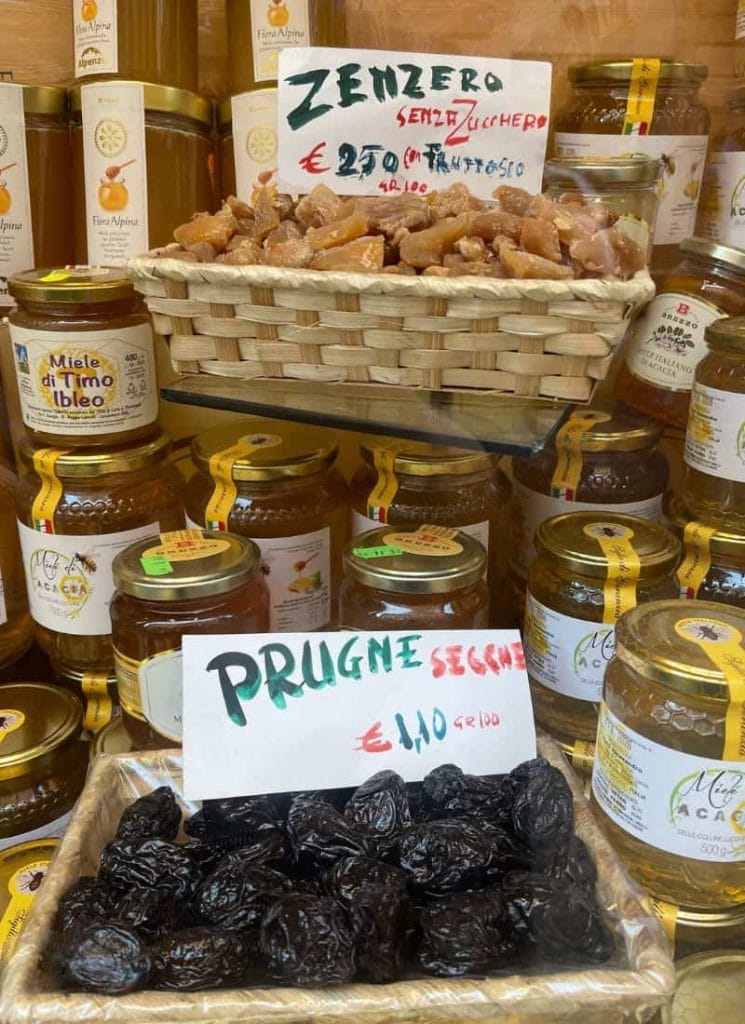
Gastronomic rarities
It’s impossible to list everything, but let’s say that among the products of all kinds and origins on the long wooden shelves that reach the ceiling are spices, candies, sauces and preserves, tea and coffee, yerba mate, dried fruits, chocolate, rice, various curries from India, Thailand, and Japan; hundreds of types of artisan pasta, tins and jars of every shape and kind. There’s an extensive selection of dry pastries like amaretti and wine biscuits, and the best candied ginger in Rome. Not to mention the wall of licorice: jars upon jars filled with varieties of every shape and size covering half the wall behind the counter. For honey lovers, there’s an incredible selection, including thyme from Iblea, lavender, and chestnut, to name a few. There’s no shortage of liquors, with a vast selection of grappas, bitters, and digestifs. Then there are all the holiday sweets, from artisanal nougat and panettone, mostaccioli and panforte, to Easter chocolates, sugar lambs, and colomba cakes. Not to mention the many ingredients for international dishes—the very reason for this grocer’s origins. But the best part of this inviting paradise is the warmth and kindness of the people who have always worked here.
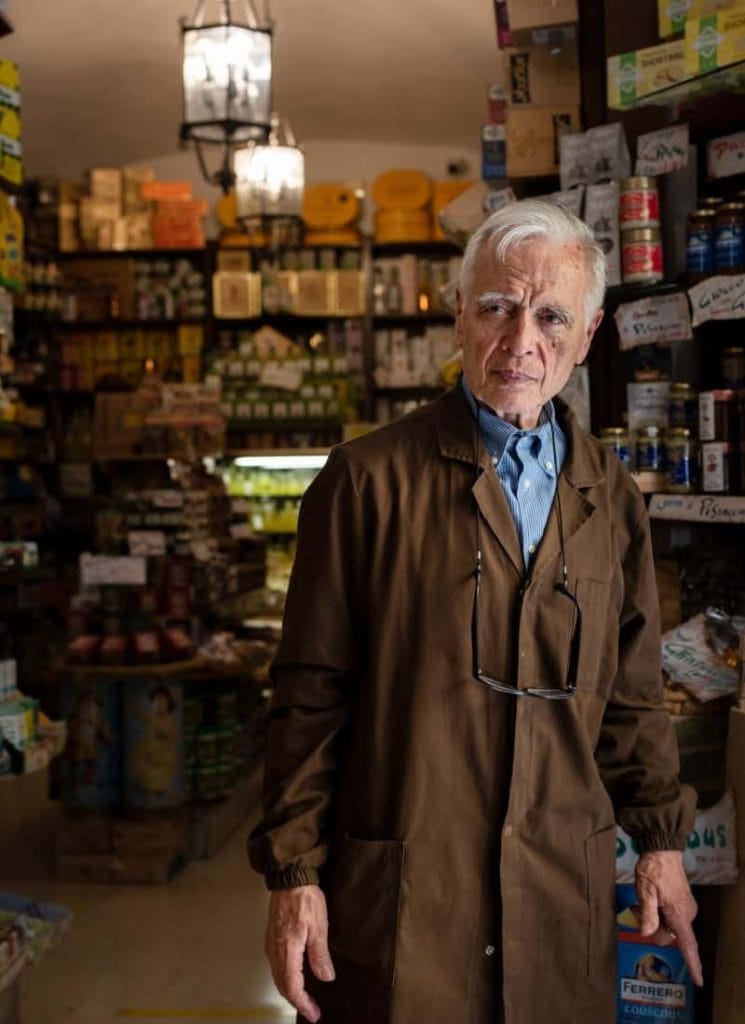
Photo Emanuele Artenio
The Innocenzi Family
A signature feature of Drogheria Innocenzi is the large sacks of grains and legumes sold in bulk, stacked all around: near the register, piled by the entrance, and placed by the mahogany counter. “Back then, everything was sold in bulk—pasta, sugar, coffee,” Giancarlo Innocenzi tells me from the back of the shop. Now in his eighties but looking a dozen years younger, he is the second generation and the cornerstone of the shop his father founded, where he has worked for over seventy years. White-haired, with expressive eyes and a gentle smile that suits his name, he lifts boxes and jumps up to pick up a piece of straw paper that fell to the floor. “I have to keep moving!” he retorts to anyone telling him to rest. “I stay young because of this shop.”
Growing up during the war, alongside his brother known as Sandro, Giancarlo shepherded the family business through the fifties, the economic boom, and has now passed the torch to the third generation, to his children Raffaele and Emanuela. We sit in silence, and then, breaking his shyness, Giancarlo begins to dig into his memories.
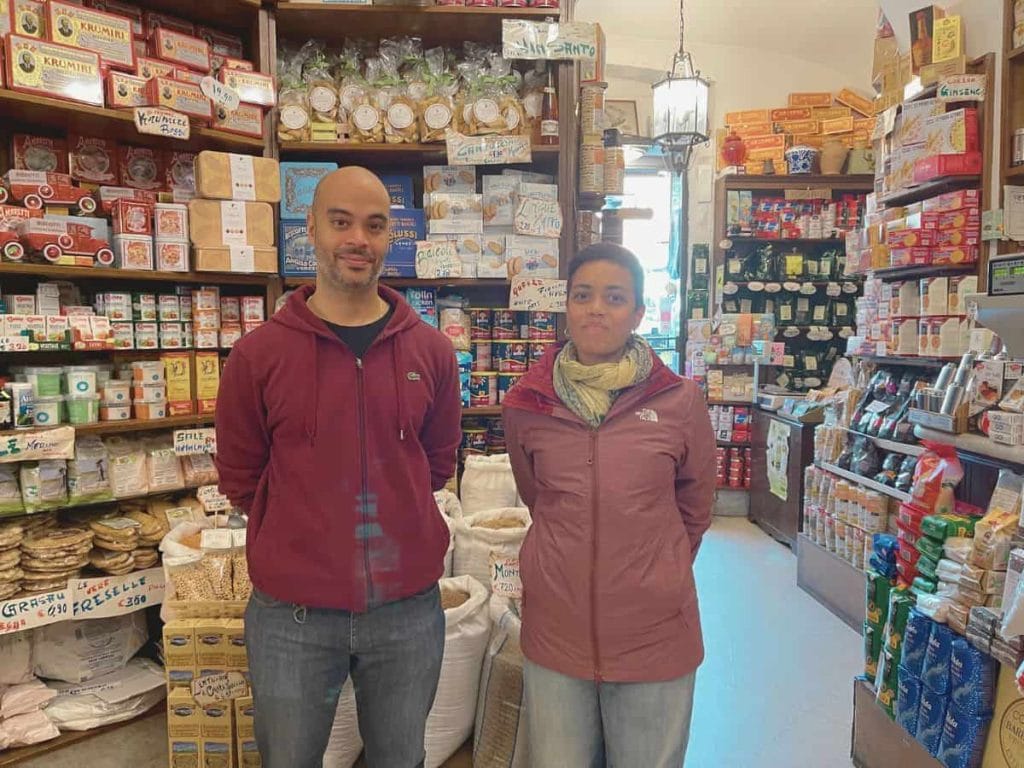
“When I was a child, the Trastevere neighborhood was another world. A little village where in the summer we’d bring out our chairs to the square and watch people pass by. My dad would sneak me to the osteria and give me ‘foglietta e palletta’—you know what that means?” he asks with a smile. His Roman dialect is beautiful and poetic, almost like a Trilussa poem. “Foglietta was the house wine, a tiny bit he’d give me, and he’d water it down with palletta, which is what we called ‘gassosa’ because of the little ball stopper you’d push to open it.”
The San Cosimato market back then was one of the busiest in the city. “Imagine, ten stalls just for fish and shellfish. For ten lire, you could have a snack of a raw mussel with a squeeze of lemon, delicious.” In the lower part of the square were the produce vendors and butchers selling vegetables, chickens, beef quarters, and lamb meat. “Pantanella, the old pasta factory, used to deliver with a cart pulled by a giant draft horse that looked like an elephant,” Giancarlo continues. “Those of us who lived on the fourth floor would shop with a basket tied to a string. People rode bikes, and painters from all over Europe came to paint our square. A beautiful place where everyone knew each other.”
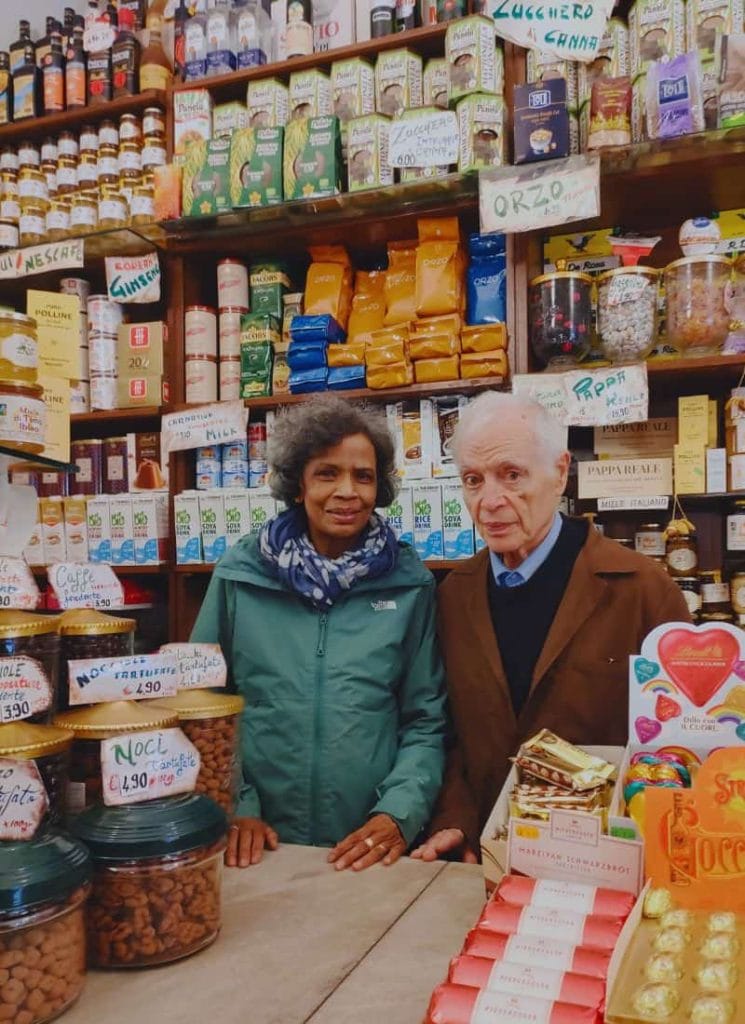
When I ask Giancarlo how he met his wife Kumsitha, who often sits at the cash register with a smile for everyone, he becomes emotional. In love like a teenager, he tells me that when his mother fell ill, “This beautiful young woman came to help at home. She was studying to become a nurse and learning Italian by day, and in the afternoon she took care of my sick mother. She even worked at the San Giovanni Hospital. Then we fell in love.” Giancarlo stands up, pretending to adjust some boxes, and wipes away a tear.
Following him from the back to the heart of the shop, he proudly points out and describes each specialty. He is the shop’s historical memory, having started working there at 14. As he explains the origin of teas and infusions or how he was the first to bring Bonajuto’s Modica chocolate to Rome, Giancarlo precisely fills a paper bag, weighing pine nuts, colorful candies, and lentils. He shares an anecdote, a curiosity, or a story for each. The prices are more than reasonable considering the quality and origin of the products. I am convinced that part of the quality of the goods is owed to his sweet words.
Old-style grocers are becoming a rarity in the capital. Places like these are portals to a bygone era. This remains one of the last gems in Trastevere, a piece of that old neighborhood that no longer exists, still speaking the Roman of Trilussa and perfumed with coffee and sugar.
Drogheria Innocenzi – via Natale del Grande, 31 – Tel. +39 06 581 2725

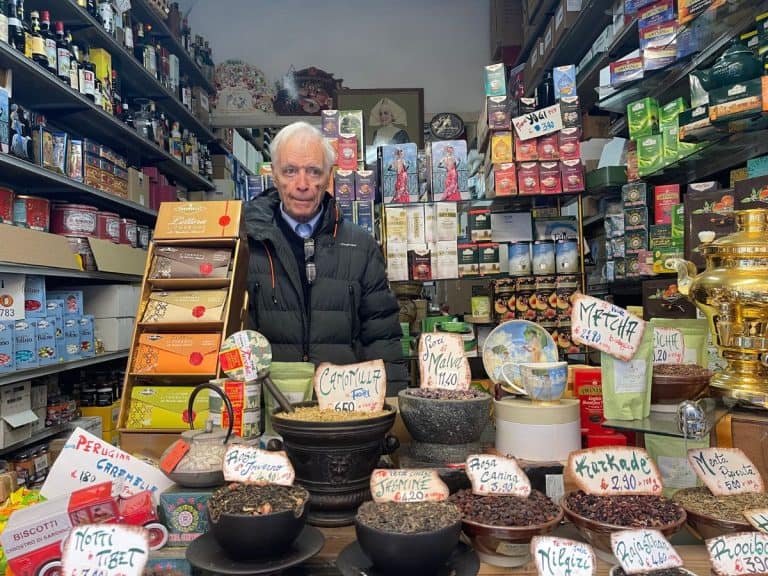
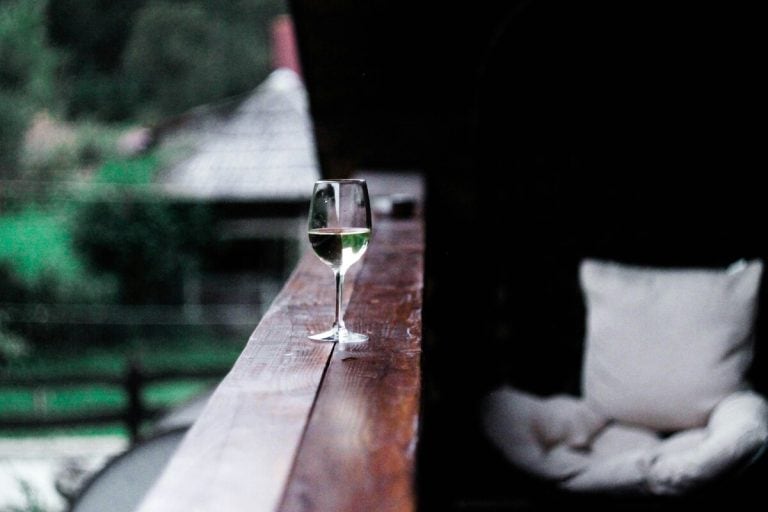 Stop diluting wine with water. It used to be common practice, but today it’s heresy
Stop diluting wine with water. It used to be common practice, but today it’s heresy US tariffs? They don’t terrify us. We remain optimistic. Lollobrigida urges not to dramatise
US tariffs? They don’t terrify us. We remain optimistic. Lollobrigida urges not to dramatise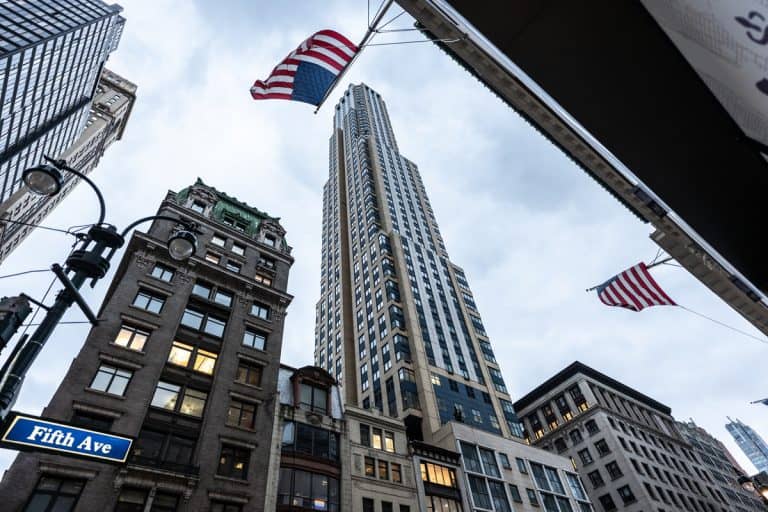 Italian wine exports to the US come to a halt. Joint appeal from wine associations to the Government
Italian wine exports to the US come to a halt. Joint appeal from wine associations to the Government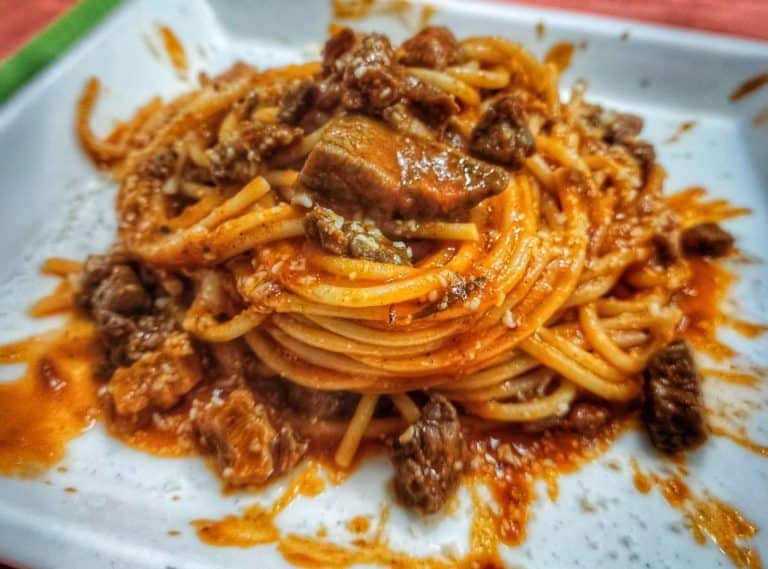 The old trattoria at the Torretta market in Naples, where workers and professionals have lunch with traditional dishes
The old trattoria at the Torretta market in Naples, where workers and professionals have lunch with traditional dishes Californian sparkling wine made with the Italian method arrives: here’s how the US is preparing to replace prosecco
Californian sparkling wine made with the Italian method arrives: here’s how the US is preparing to replace prosecco